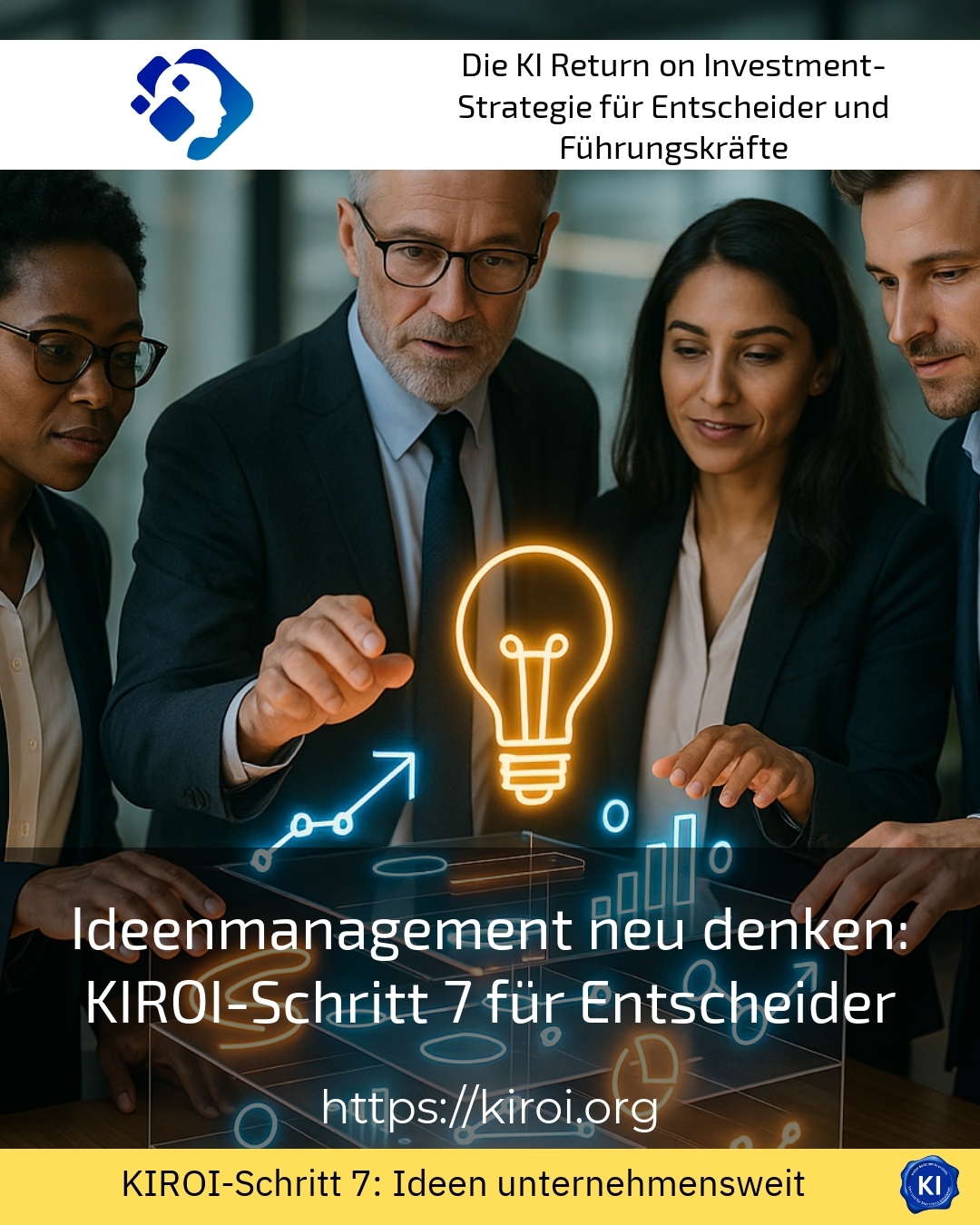Modern companies face the challenge of systematically capturing creative impulses and implementing them sustainably. This is precisely where the concept of idea management comes in. It is no longer just about collecting suggestions, but about a continuous process that actively involves employees and promotes innovation throughout the organisation. KIROI Step 7 in particular provides valuable impetus here and supports organisations in understanding idea management as a dynamic companion.
Idea management as a motor for innovation
Idea management is no longer a marginal issue, but a central lever for successful innovation in the company. Many organisations face the challenge that ideas are collected but not really put into practice. Clients often report that suggestions come to nothing or that no feedback is given. This demotivates and slows down innovation.
A structured idea management process begins with the systematic collection of suggestions - regardless of whether they come from employees, customers or partners. Modern tools such as Jira Product Discovery or Q-ideate help to centralise ideas and make them transparent. In the next step, an interdisciplinary team evaluates the submissions according to clear criteria, for example using scoring models or SWOT analyses.
Proven methods include the establishment of independent innovation teams, the introduction of standardised evaluation criteria and the creation of exchange platforms where ideas can be further developed together. It is important that the process remains flexible and adapts to the specific needs of the company.
Idea management in practice: examples from the industry
In the mechanical engineering industry, development loops are shortened and the transfer of knowledge between specialist departments is strengthened. In the IT industry, regular innovation challenges result in new solutions that flow directly into product development. In the healthcare sector, patient feedback and employee suggestions are systematically collected and integrated into process optimisation.
Step 7 of KIROI was used in a medium-sized production company to accelerate the implementation of suggestions for improvement. Targeted moderated workshops and close coaching enabled cross-departmental obstacles to be identified and removed. The resulting culture of innovation led to measurably faster product development cycles and a significant increase in employee motivation.
In the area of industrial production, step 7 was used to systematically identify obstacles to the realisation of promising ideas. The obstacles were removed through moderated workshops. This resulted in an accelerated realisation of innovation projects and a more intensive exchange between the specialist departments, which sustainably strengthened the innovative power.
Idea management and transruption coaching
Transruption coaching helps teams to develop new perspectives and take concrete steps. This creates sustainable change. Clients often report that suggestions come to nothing or that there is no feedback. This is demotivating and slows down innovation. That is why it is important not only to collect, but also to accompany, reflect and coach. This is the core of KIROI Step 7: Dynamic, dialogue-based, sustainable.
Regular exchange rounds were introduced in which employees could present their ideas and develop them further together. Managers took on a more active role as promoters and providers of ideas. This led to a noticeable increase in participation in idea management and innovative solutions were implemented more quickly. The support provided by experienced coaches was an important success factor because they provided impetus, moderated and continuously adapted the process.
Companies define a vision and mission for idea management and communicate these clearly. Open communication and a feedback culture are promoted. Employees are encouraged to express and discuss new ideas. Innovation prizes and rewards increase employee motivation.
Idea management as a continuous companion in the company
Idea management does not just mean collecting and evaluating ideas once. Rather, it is understood as an ongoing process that promotes creativity and creates structures for implementation. KIROI step 7 in particular stands for holistic support in the development of ideas. Here, companies receive valuable impulses on how to recognise and overcome obstacles at an early stage. This not only supports the acceptance of suggestions, but also promotes their successful realisation.
Regular workshop series bring different departments together. People present their ideas. Others add to or adapt them. This is how ideas grow across borders. Idea management thus becomes a real driver of corporate transformation.
An innovation strategy is developed and implemented to ensure that employees' ideas contribute to achieving the company's goals. Regular reviews and updates of the processes ensure that idea management meets the company's requirements.
My analysis
Modern idea management, particularly as part of KIROI step 7, offers a systematic and supportive approach that goes beyond simply collecting ideas. Transparent feedback mechanisms, digital platforms and continuous stimuli are used to promote and efficiently implement innovative ideas. Various industries have shown that this shortens process cycles, shares knowledge and strengthens employee performance in an appreciative manner. Idea management thus becomes a key element in a learning and innovation-orientated corporate culture.
Further links from the text above:
Rethinking ideas management: KIROI step 7 throughout the company
Rethinking ideas management: KIROI step 7 for your company
Rethinking ideas management: KIROI step 7 in corporate use
Revolutionising idea management: KIROI Step 7 for companies
Rethinking ideas management: KIROI step 7 company-wide
Rethinking ideas management: Strengthening innovation culture with KIROI Step 7
Idea management 2.0: KIROI step 7 for company-wide ideas
Unleash idea management: KIROI step 7 for your company
Idea management: KIROI step 7 for company-wide success
For more information and if you have any questions, please contact Contact us or read more blog posts on the topic Artificial intelligence here.















